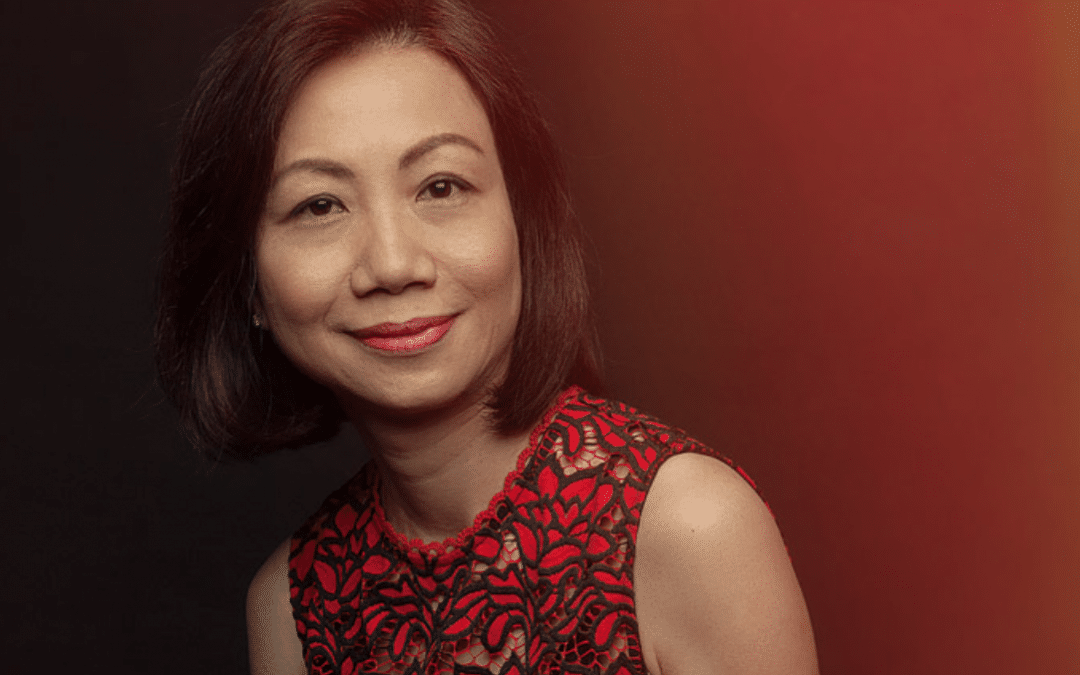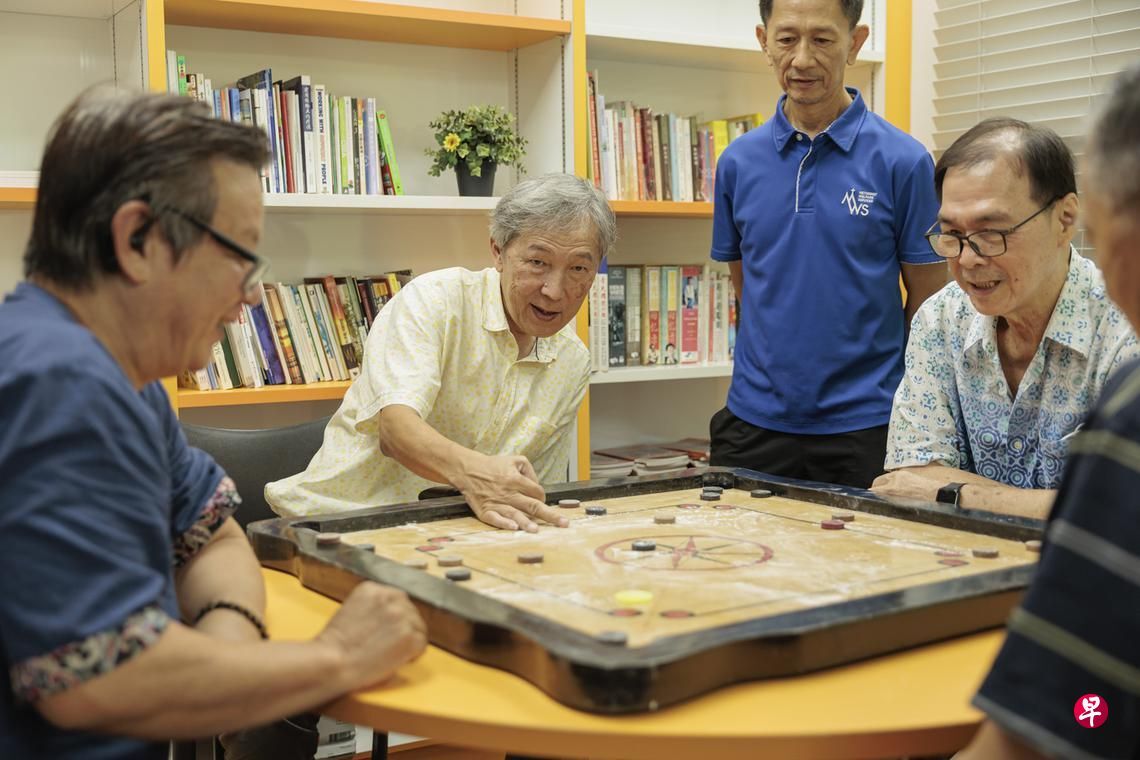Portfolio Magazine: Helping others help others


“These six years at CFS have definitely been a fulfilling learning journey for me,” says Ms. Catherine Loh. She smiles for the first time since we sat down to discuss how she traded her successful banking career to one in charity – as CEO of CFS. “I developed greater empathy and learned to see things from another person’s perspective. I’m also humbled by the selflessness displayed by so many in the social sector as they strive daily to help their beneficiaries overcome life’s challenges.”
Set up in 2008, CFS currently manages 110 donor funds, including the SR Nathan Education Upliftment Fund, and has raised over S$100 million in total donations. It also works closely with over 400 charities to identify the gaps in the community that need support.
Ms. Loh sees her work as stimulating attempts at innovation and problem solving. “The needs of donors and beneficiaries are always changing, and there are constantly new ways that we can work with donors and charity partners to solve complex social issues.”
A Different Start
The moment she stepped out of the university, Ms. Loh, like most of her peers, began an earnest pursuit of the 5Cs: cash, car, condominium and country club – popular benchmarks of success in the rapidly developing economic powerhouse that Singapore was in the 1980s and ‘90s.
She started her career at the Government of Singapore Investment Corporation, followed by leadership positions in the Singapore offices of Nomura, Lehman Brothers and Goldman Sachs. “I’m very fortunate to have spent many years of my career in banking, which has seen tremendous growth over the past 20 years,” Ms. Loh says. Work in a dealing room was intense – a virtual roller-coaster ride that followed the constant fluctuations in the financial markets. It was also very competitive and profit-driven.
But there were genuine perks: “The best part of the job was meeting clients from all over the region, understanding their needs, and finding suitable financial solutions in volatile financial markets. Many colleagues and clients have become my good friends and I will always treasure these relationships forged over the years,” Ms. Loh says.
The thrilling ride came to a grinding halt, however. In 2008, the financial crisis that would trigger a global recession had peaked; its aftermath took a toll on Ms. Loh’s health. “I decided to take a break to spend more time with my family and regain my health. After leaving the banking industry in 2010, I spent a year and a half at home looking after my third child who was born in 2009.”
Changing Tracks
When her toddler entered preschool, Ms. Loh considered returning to work. A job offer from the social sector came along. Although it was a different path, her previous volunteer involvement with Assisi Hospice, Metta Welfare Association, and Telok Kurau Primary School prepared her for it.
“I thought it was a wonderful opportunity for me to contribute back to society in a way that can maximize my skill-set and experience in management, sales and marketing, and financial investment management.”
Transitioning into her new role was initially difficult. Ms. Loh had to adjust from working in a large profit-driven organization to a small non-profit focused on doing good. “Being in a lean organization means every team member often has to multitask. Another learning curve was managing staff who are driven by the will to do good and not just by money alone.”
Ms. Loh also found that the largely female-dominated CFS required a more consensus style of management versus a more direct confrontational style in a male-dominated dealing room. “Working with charity partners also demanded more patience and empathy as they are generally understaffed and unable to work at a speed investment that bankers are used to.”
Inspiring Philanthropy
”Our goal has always been to inspire philanthropy, and that has not changed. When I first joined, CFS was still at its infancy and donors were simply looking for a convenient way to consolidate their donation and disburse grants. The needs of donors have evolved along with the shifting social landscape, and CFS has had to rise up beyond an administrative role to better accommodate these changing needs.”
Over the years, as donors gain a better understanding of the social landscape, they began to ask for more information and transparency on how their donations actually help those in need. “We then have to assist our charity partners to better articulate the impact of their programs to donors. For donors who want to find out even more, we facilitate charity visits and meetings with beneficiaries, with the objective of building deeper collaborations and strengthening partnerships among our donors and the communities we serve,” Ms. Loh elaborates.
In the recent years, donors have sought out CFS for strategic philanthropy advisory to obtain help in devising strategies to achieve their philanthropic goals and objectives. “We do that by understanding what donors want to achieve with their philanthropic dollars and we create a ‘portfolio’ of charity programs which they can support to achieve their goals. We would also follow up with evaluation and reporting back to donors so that they understand the impact of their giving.”
A Distinct Difference
Ms. Loh observes that although many people want to help, some may not have time, experience or expertise to do it themselves. “This sentiment can be exacerbated by the sheer volume of information available online. Donors want efficient ways to structure their philanthropy, so they can plan sustained giving to the causes they care about.
“This is where CFS can help with our philanthropy expertise spanning administration, strategy and grant-making. We save donors the work and resources needed to set up a private foundation. By tapping on our philanthropy services, they avoid high overheads, save on time and legal expenses, and enjoy tax deductions upfront.”
CFS has in-house resources to identify charities and evaluate their programs. “We help avoid duplication in funding areas where there may already be adequate government funding or private support. For donors who establish endowment funds with us, we invest their monies to ensure that there is a steady income stream to benefit their selected charities.”
CFS helps donors understand the issues and let them decide how they want to help. It then applies the donors’ funds to the particular area they have identified, and help to track the outcome. “This enables donors to feel a sense of fulfillment, and when they do, very often, they want to do more to help.”
Ms. Loh maintains that donors appreciate CFS following up on the outcomes of their grants. Donors understand that their support is part of a greater whole, and they like to understand how their money has made a difference. “The desire for accountability has always been there, and 10 years on, we see enhanced reporting capability in the charity sector. At CFS, we would like to think that we have contributed positively to this trend.”
“These six years at CFS have definitely been a fulfilling learning journey for me,” says Ms. Catherine Loh. She smiles for the first time since we sat down to discuss how she traded her successful banking career to one in charity – as CEO of CFS. “I developed greater empathy and learned to see things from another person’s perspective. I’m also humbled by the selflessness displayed by so many in the social sector as they strive daily to help their beneficiaries overcome life’s challenges.”
Set up in 2008, CFS currently manages 110 donor funds, including the SR Nathan Education Upliftment Fund, and has raised over S$100 million in total donations. It also works closely with over 400 charities to identify the gaps in the community that need support.
Ms. Loh sees her work as stimulating attempts at innovation and problem solving. “The needs of donors and beneficiaries are always changing, and there are constantly new ways that we can work with donors and charity partners to solve complex social issues.”
A Different Start
The moment she stepped out of the university, Ms. Loh, like most of her peers, began an earnest pursuit of the 5Cs: cash, car, condominium and country club – popular benchmarks of success in the rapidly developing economic powerhouse that Singapore was in the 1980s and ‘90s.
She started her career at the Government of Singapore Investment Corporation, followed by leadership positions in the Singapore offices of Nomura, Lehman Brothers and Goldman Sachs. “I’m very fortunate to have spent many years of my career in banking, which has seen tremendous growth over the past 20 years,” Ms. Loh says. Work in a dealing room was intense – a virtual roller-coaster ride that followed the constant fluctuations in the financial markets. It was also very competitive and profit-driven.
But there were genuine perks: “The best part of the job was meeting clients from all over the region, understanding their needs, and finding suitable financial solutions in volatile financial markets. Many colleagues and clients have become my good friends and I will always treasure these relationships forged over the years,” Ms. Loh says.
The thrilling ride came to a grinding halt, however. In 2008, the financial crisis that would trigger a global recession had peaked; its aftermath took a toll on Ms. Loh’s health. “I decided to take a break to spend more time with my family and regain my health. After leaving the banking industry in 2010, I spent a year and a half at home looking after my third child who was born in 2009.”
Changing Tracks
When her toddler entered preschool, Ms. Loh considered returning to work. A job offer from the social sector came along. Although it was a different path, her previous volunteer involvement with Assisi Hospice, Metta Welfare Association, and Telok Kurau Primary School prepared her for it.
“I thought it was a wonderful opportunity for me to contribute back to society in a way that can maximize my skill-set and experience in management, sales and marketing, and financial investment management.”
Transitioning into her new role was initially difficult. Ms. Loh had to adjust from working in a large profit-driven organization to a small non-profit focused on doing good. “Being in a lean organization means every team member often has to multitask. Another learning curve was managing staff who are driven by the will to do good and not just by money alone.”
Ms. Loh also found that the largely female-dominated CFS required a more consensus style of management versus a more direct confrontational style in a male-dominated dealing room. “Working with charity partners also demanded more patience and empathy as they are generally understaffed and unable to work at a speed investment that bankers are used to.”
Inspiring Philanthropy
”Our goal has always been to inspire philanthropy, and that has not changed. When I first joined, CFS was still at its infancy and donors were simply looking for a convenient way to consolidate their donation and disburse grants. The needs of donors have evolved along with the shifting social landscape, and CFS has had to rise up beyond an administrative role to better accommodate these changing needs.”
Over the years, as donors gain a better understanding of the social landscape, they began to ask for more information and transparency on how their donations actually help those in need. “We then have to assist our charity partners to better articulate the impact of their programs to donors. For donors who want to find out even more, we facilitate charity visits and meetings with beneficiaries, with the objective of building deeper collaborations and strengthening partnerships among our donors and the communities we serve,” Ms. Loh elaborates.
In the recent years, donors have sought out CFS for strategic philanthropy advisory to obtain help in devising strategies to achieve their philanthropic goals and objectives. “We do that by understanding what donors want to achieve with their philanthropic dollars and we create a ‘portfolio’ of charity programs which they can support to achieve their goals. We would also follow up with evaluation and reporting back to donors so that they understand the impact of their giving.”
A Distinct Difference
Ms. Loh observes that although many people want to help, some may not have time, experience or expertise to do it themselves. “This sentiment can be exacerbated by the sheer volume of information available online. Donors want efficient ways to structure their philanthropy, so they can plan sustained giving to the causes they care about.
“This is where CFS can help with our philanthropy expertise spanning administration, strategy and grant-making. We save donors the work and resources needed to set up a private foundation. By tapping on our philanthropy services, they avoid high overheads, save on time and legal expenses, and enjoy tax deductions upfront.”
CFS has in-house resources to identify charities and evaluate their programs. “We help avoid duplication in funding areas where there may already be adequate government funding or private support. For donors who establish endowment funds with us, we invest their monies to ensure that there is a steady income stream to benefit their selected charities.”
CFS helps donors understand the issues and let them decide how they want to help. It then applies the donors’ funds to the particular area they have identified, and help to track the outcome. “This enables donors to feel a sense of fulfillment, and when they do, very often, they want to do more to help.”
Ms. Loh maintains that donors appreciate CFS following up on the outcomes of their grants. Donors understand that their support is part of a greater whole, and they like to understand how their money has made a difference. “The desire for accountability has always been there, and 10 years on, we see enhanced reporting capability in the charity sector. At CFS, we would like to think that we have contributed positively to this trend.”
- Related Topics For You: CHARITY STORIES, DONOR STORIES, NEWS, STORIES OF IMPACT



